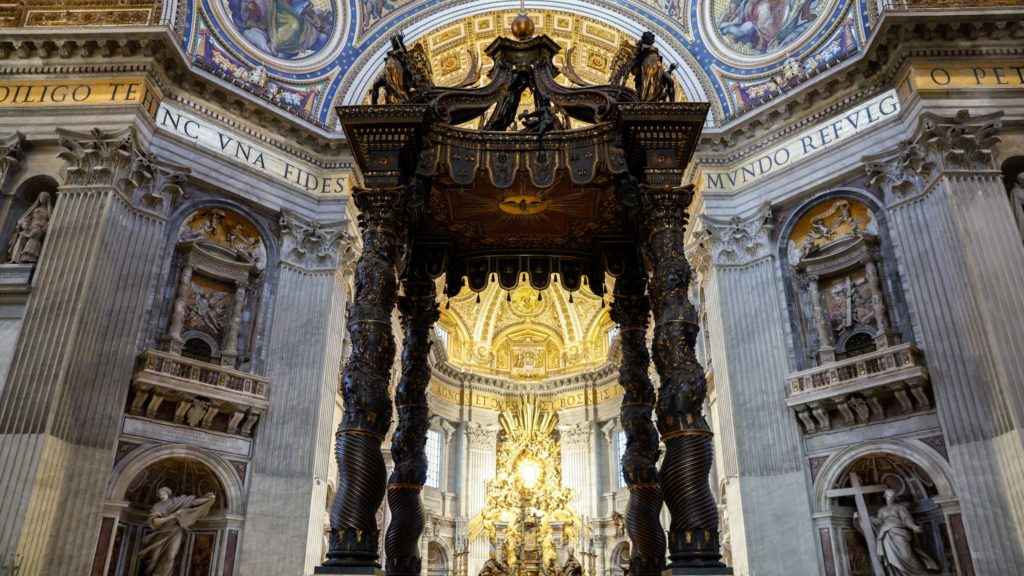The nearly 400-year-old sculpted canopy towering over the main altar of St. Peter's Basilica will be surrounded by scaffolding for most of 2024 as it is washed, repaired and restored.
Standing over 30 feet tall, the baldachin, designed by Baroque master Gian Lorenzo Bernini, has stood over the tomb of St. Peter since 1634. And for all that time it has gathered dust, cracks and rust despite regular cleanings.
As a result, "we can't not intervene" to restore the structure, said Alberto Capitanucci, the head engineer of the Fabbrica di San Pietro -- the office responsible for upkeep of the basilica.
Speaking at a news conference announcing the Vatican's restoration plans Jan. 11, Capitanucci said the procedure will follow that of the baldachin's last recorded restoration in 1758, only using an independent scaffolding structure that was not previously possible to build.
The restoration process will begin after Feb. 12 and the scaffolding, which will allow for direct restoration work, will be installed around the baldachin before Holy Week, Capitanucci said. The entire restoration process is expected to last about 10 months and papal liturgical ceremonies will continue to take place at the altar.
Cardinal Mauro Gambetti, archpriest of St. Peter's Basilica, said the restoration will take place "in view of the jubilee," or Holy Year 2025, "since the work is expected to end in December of the current year before the holy door is opened."
The first step will be to photograph the entire baldachin, followed by a deep cleaning to remove accumulated dust and dirt particles. Restorers will then treat the metal components of the structure to remove rust and apply surface protection, clean its marble base and use an acrylic resin to fill cracks in the baldachin's wooden pieces.
Pietro Zander, head of the Fabbrica's artistic heritage section, said that the degradation of the baldachin is partially because the "microclimate inside of the basilica changes from the continuous flux of visitors," which some days can reach up to 50,000 people.
The flow of visitors during the day, along with the significant changes in temperature and humidity between night and day, lead to the corrosion and rusting of its metallic components and the swelling of its wood.
According to a document published by the Vatican Jan. 11, over 20% of the baldachin is made of wood which has been painted or gilded and is sensitive to temperature variations and changes in humidity.
The project is expected to cost 700,000 euro (about $766,000) and will be entirely funded by the U.S.-based Knights of Columbus, which has funded 17 other projects in collaboration with the Fabbrica of San Pietro.
Patrick Kelly, supreme knight of the Knights of Columbus, told Catholic News Service that the decision to fund the baldachin's restoration is an "outgrowth" of the knights' core principles of charity and unity.
"We're in union with the Holy See, with the successor of St. Peter, and so these kinds of projects are very much in keeping with who we are and our mission," he said.
Kelly said the baldachin project is an "iconic restoration" over the tomb of St. Peter that "is a great sign of unity in the church."
"It's something we can look to," he said. "All of us can be proud of this and gratified that there is unity; it's not all disunity."

